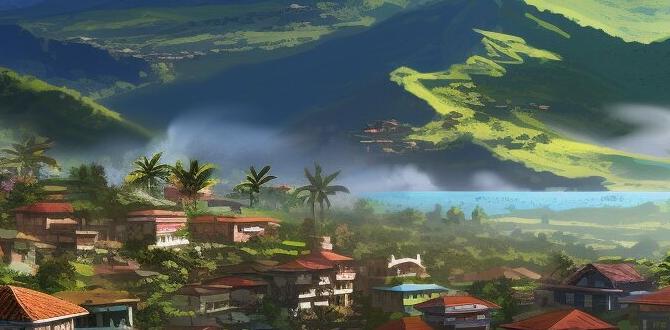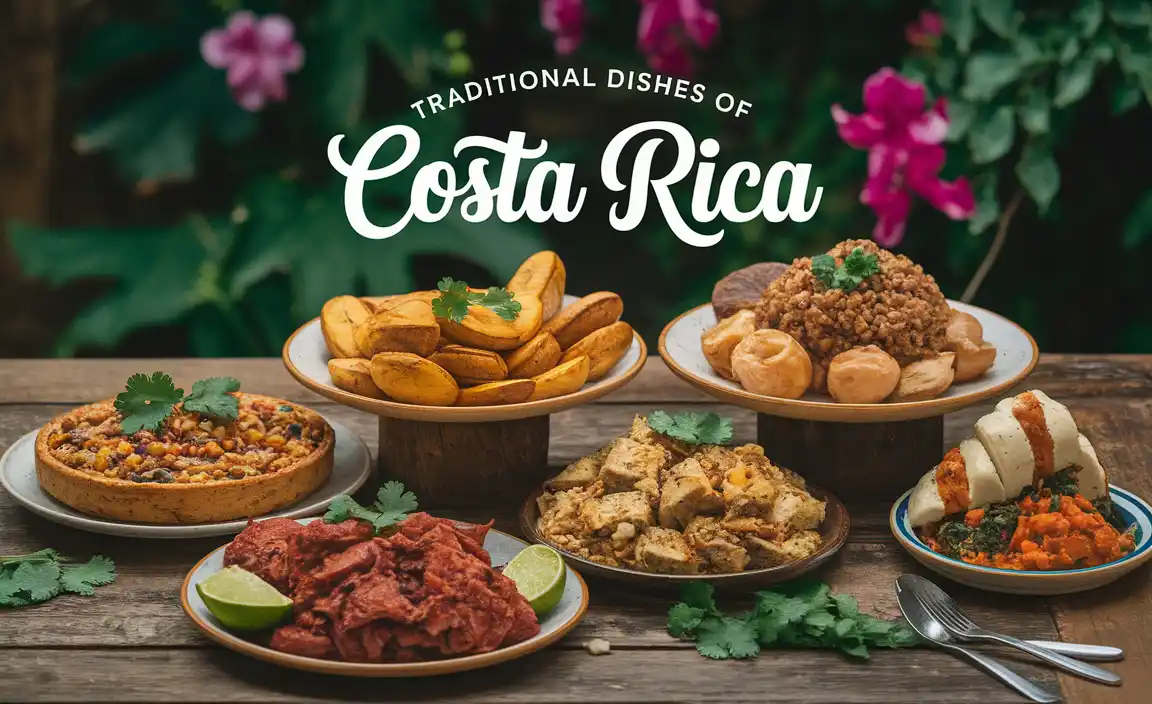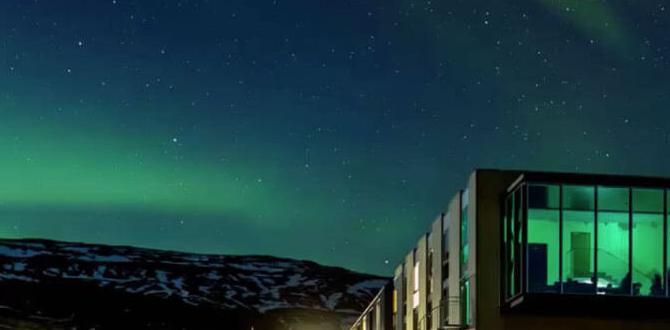Have you ever dreamed of stepping back in time? Picture yourself wandering through cobblestone streets, surrounded by colorful buildings. In Costa Rica, this dream can become a reality.
Historic towns in Costa Rica are full of stories just waiting to be told. Did you know that San José, the capital, has buildings over a century old? These towns are not just places on a map; they are alive with history and charm.
Exploring these towns feels like uncovering treasure. Imagine sipping coffee in a café that’s been there for generations. What secrets might the walls tell if they could speak?
Each town has its own unique character. Some are famous for their art, while others boast vibrant markets. Are you ready to discover the magic of Costa Rica’s historic towns?
Explore The Enchantment Of Historic Towns In Costa Rica

Historic Towns in Costa Rica
Costa Rica is filled with charming historic towns that tell vibrant stories. For example, Heredia is known for its classic colonial architecture and coffee culture. Did you know that Cartago was once the capital? It’s home to the stunning Basilica de Nuestra Señora de los Ángeles. Exploring these towns offers a taste of rich traditions and local histories. Whether wandering through old streets or visiting museums, each town has unique adventures waiting for you!Cartago: The First Capital of Costa Rica
Historical significance and founding of Cartago. Key attractions: Basilica de Nuestra Señora de los Ángeles and Ruins of the Santiago Apostle.Cartago holds the title as the first capital of Costa Rica. Founded in 1563, it played a key role in the country’s early history. This town is filled with fascinating sites. Visitors can explore the Basilica de Nuestra Señora de los Ángeles, a beautiful church that attracts many pilgrims. Another important site is the Ruins of the Santiago Apostle, the remains of an old church that tell stories from the past. These landmarks showcase Cartago’s rich history.
What is special about Cartago?
Cartago is special for its historical importance and beautiful attractions. It is a gateway to understanding Costa Rica’s beginnings. The stunning basilica and ancient ruins draw many visitors each year.
San José: The Heart of Costa Rica
Development and urban history of San José. Essential landmarks: National Theatre and PreColumbian Gold Museum.San José is the bustling heart of Costa Rica. It grew from a quiet town into a vibrant city. Established in the 18th century, its growth has shaped the country’s culture and economy. You can see this in key places like the National Theatre and the Pre-Columbian Gold Museum.
- The National Theatre showcases beautiful architecture and lively performances.
- The Pre-Columbian Gold Museum holds ancient gold pieces, telling stories of early Costa Rican civilization.
What is special about San José’s history?
San José is special because it reflects how Costa Rica has changed over time. It shows the blend of tradition and modern life. The city is full of art, culture, and history that locals and visitors love!
Alajuela: The Birthplace of Juan Santamaría
Historical role during the 1856 Filibuster War. Major attractions: Juan Santamaría Museum and Central Park.Alajuela played a big role during the 1856 Filibuster War. This was when Costa Ricans defended their land from outside invaders. The city’s hero, Juan Santamaría, showed great bravery. His actions helped shape the country’s future. You can explore two main attractions:
- Juan Santamaría Museum: This museum tells the story of Santamaría’s courage.
- Central Park: A beautiful place to relax and enjoy local culture.
What is the significance of Juan Santamaría in Costa Rican history?
Juan Santamaría is known as a national hero. His bravery during the Filibuster War inspires many Costa Ricans today. He stands for the country’s fight for freedom.
Climbing Historical Mountains: Orosi and the Valley
Historical context of the Orosi Valley. Attractions: Orosi Church and the ruins of Ujarrás.The Orosi Valley is known for its rich history and stunning scenery. This area, once home to ancient tribes, features beautiful mountains that whisper stories of the past. Visitors can explore the charming Orosi Church, built in the 18th century, which stands as a testament to the valley’s cultural roots. Just a stone’s throw away are the fascinating ruins of Ujarrás, where time stopped and history peeks through the crumbling walls. It’s like stepping into a time machine, but without the awkward time travel outfits!
| Attraction | Description |
|---|---|
| Orosi Church | Historic church from the 1700s, filled with charm! |
| Ruins of Ujarrás | Ancient ruins that tell tales of the past. |
Puntarenas: Gateway to the Pacific
Historical relevance as a port town. Key sites: The Malecón and historical colonial architecture.Puntarenas holds a special place in history as a key port town in Costa Rica. It has served as a busy gateway to the Pacific Ocean for many years. Visitors can enjoy the beautiful Malecón, a long seaside walkway that showcases stunning ocean views. The area is rich in colonial architecture, preserving the town’s past charm. Walking here feels like stepping back in time!
- Discover the vibrant Malecón.
- Admire the historic colonial buildings.
- Experience the lively beach culture.
What makes Puntarenas special?
The blend of history and scenic views makes Puntarenas unique. It offers visitors a glimpse into Costa Rica’s maritime past while enjoying the beautiful coast. It’s a place where history meets adventure!
Grecia: The Town of the Metal Church
Unique features of Grecia’s craftsmanship and architecture. Mustvisit places: La Iglesia de la Nuestra Señora de la Merced.In the heart of Costa Rica lies a charming town known for its remarkable metal church. Grecia boasts unique craftsmanship, with its iron structure standing proudly as a symbol of creativity. You can’t miss visiting La Iglesia de la Nuestra Señora de la Merced, a stunning church made entirely of metal! Imagine a church as shiny as a robot. The architecture is not only eye-catching but also tells stories of the past. So grab your camera and enjoy the sights!
| Unique Features | Description |
|---|---|
| Metal Church | Built using iron, showcasing stunning architecture. |
| Craftsmanship | Local artisans created intricate designs and details. |
| Historic Value | A mix of culture, history, and craftsmanship. |
La Fortuna: A Blend of History and Natural Wonders
Brief history of La Fortuna’s development in tourism. Cultural highlights: Visits to indigenous communities and ecotourism practices.La Fortuna has transformed into a tourism hotspot over the years. Once a quiet village, its stunning **Arenal Volcano** drew adventurous travelers. People flock here for thrilling outdoor fun and relaxing hot springs. Visitors can also meet local indigenous communities and learn about their rich cultures. Ecotourism keeps La Fortuna’s environment safe while letting visitors experience nature up close. It’s the perfect mix of excitement and peace, like a roller coaster ride through a spa!
| Key Highlights | Description |
|---|---|
| Historical Development | From a quiet village to a bustling tourist destination. |
| Cultural Visits | Engage with indigenous communities and their traditions. |
| Ecotourism Practices | Activities that protect nature while entertaining visitors. |
Tips for Visiting Historic Towns in Costa Rica
Best times to visit and local events. Recommendations for immersive experiences and guided tours.Visiting historic towns in Costa Rica is like stepping into a time machine! The best time to go is during the dry season from December to April. This way, you won’t get soaked like a wet sock. Check out local events like festivals, where you might see dancing, music, and colorful parades. For an immersive experience, consider joining guided tours. They can share stories that make the past come alive. Below is a tip table for your trip:
| Best Times to Visit | Local Events | Recommended Tours |
|---|---|---|
| December to April | Cultural Festivals | Guided Historical Walks |
| Local Celebrations | Craft Markets | Food Tasting Tours |
With these tips, you’ll have an unforgettable adventure! So pack your bags and prepare for some fun!
Conclusion
In conclusion, historic towns in Costa Rica, like Cartago and San José, offer rich culture and beautiful architecture. You can explore fascinating history, taste local food, and enjoy vibrant festivals. To truly experience Costa Rica’s past, consider visiting these towns on your next trip. For more fun ideas, read about the best activities in each area!FAQs
What Are Some Of The Most Historically Significant Towns In Costa Rica, And What Events Shaped Their Development?Some important towns in Costa Rica are Cartago, San José, and Alajuela. Cartago was the first capital and had the famous Basilica, a church built after a miracle. San José became the capital later and grew because of trade and education. Alajuela is important for its coffee farms and was the home of a famous leader named Juan Santamaría. These towns grew because of their role in history and their people’s hard work.
How Does The Architecture In Costa Rica’S Historic Towns Reflect The Country’S Colonial Past?The buildings in Costa Rica’s historic towns show a lot about its colonial past. You can see Spanish influences in the colorful houses and churches. Many buildings are made of wood and have bright, cheerful colors. The design is simple but beautiful, mixing old styles with local ideas. This reminds us of the people and cultures that shaped Costa Rica long ago.
What Role Do Historic Towns In Costa Rica Play In Preserving Indigenous And Afro-Caribbean Cultures?Historic towns in Costa Rica help keep indigenous and Afro-Caribbean cultures alive. They show us old buildings, art, and stories. You can see traditional music and dance during local festivals. These towns teach us about the past and help everyone remember their roots. By visiting them, we support and celebrate these unique cultures!
Can You Describe Any Notable Festivals Or Cultural Events That Take Place In Costa Rica’S Historic Towns?In Costa Rica, you can enjoy the Fiesta de los Diablitos in Boruca. This festival celebrates the native culture with colorful costumes and dances. Another fun event is the Festival de la Luz in San José, where you can see a big parade with lights and music. We also have the Festival de Palmares, which features concerts and tasty food. These events show the rich culture and history of Costa Rica!
How Do Historic Towns In Costa Rica Contribute To The Country’S Tourism Industry, And What Are Some Popular Attractions In These Areas?Historic towns in Costa Rica help tourism by showing our rich culture and history. People visit to see old buildings and learn about traditions. Some popular attractions are the colorful streets of Cartago, the old church in San José, and the charming town of Grecia with its metal church. Visitors enjoy taking photos, shopping for souvenirs, and trying local food. These places make Costa Rica unique and fun for everyone!
{“@context”:”https://schema.org”,”@type”: “FAQPage”,”mainEntity”:[{“@type”: “Question”,”name”: “What Are Some Of The Most Historically Significant Towns In Costa Rica, And What Events Shaped Their Development? “,”acceptedAnswer”: {“@type”: “Answer”,”text”: “Some important towns in Costa Rica are Cartago, San José, and Alajuela. Cartago was the first capital and had the famous Basilica, a church built after a miracle. San José became the capital later and grew because of trade and education. Alajuela is important for its coffee farms and was the home of a famous leader named Juan Santamaría. These towns grew because of their role in history and their people’s hard work.”}},{“@type”: “Question”,”name”: “How Does The Architecture In Costa Rica’S Historic Towns Reflect The Country’S Colonial Past? “,”acceptedAnswer”: {“@type”: “Answer”,”text”: “The buildings in Costa Rica’s historic towns show a lot about its colonial past. You can see Spanish influences in the colorful houses and churches. Many buildings are made of wood and have bright, cheerful colors. The design is simple but beautiful, mixing old styles with local ideas. This reminds us of the people and cultures that shaped Costa Rica long ago.”}},{“@type”: “Question”,”name”: “What Role Do Historic Towns In Costa Rica Play In Preserving Indigenous And Afro-Caribbean Cultures? “,”acceptedAnswer”: {“@type”: “Answer”,”text”: “Historic towns in Costa Rica help keep indigenous and Afro-Caribbean cultures alive. They show us old buildings, art, and stories. You can see traditional music and dance during local festivals. These towns teach us about the past and help everyone remember their roots. By visiting them, we support and celebrate these unique cultures!”}},{“@type”: “Question”,”name”: “Can You Describe Any Notable Festivals Or Cultural Events That Take Place In Costa Rica’S Historic Towns? “,”acceptedAnswer”: {“@type”: “Answer”,”text”: “In Costa Rica, you can enjoy the Fiesta de los Diablitos in Boruca. This festival celebrates the native culture with colorful costumes and dances. Another fun event is the Festival de la Luz in San José, where you can see a big parade with lights and music. We also have the Festival de Palmares, which features concerts and tasty food. These events show the rich culture and history of Costa Rica!”}},{“@type”: “Question”,”name”: “How Do Historic Towns In Costa Rica Contribute To The Country’S Tourism Industry, And What Are Some Popular Attractions In These Areas? “,”acceptedAnswer”: {“@type”: “Answer”,”text”: “Historic towns in Costa Rica help tourism by showing our rich culture and history. People visit to see old buildings and learn about traditions. Some popular attractions are the colorful streets of Cartago, the old church in San José, and the charming town of Grecia with its metal church. Visitors enjoy taking photos, shopping for souvenirs, and trying local food. These places make Costa Rica unique and fun for everyone!”}}]}







